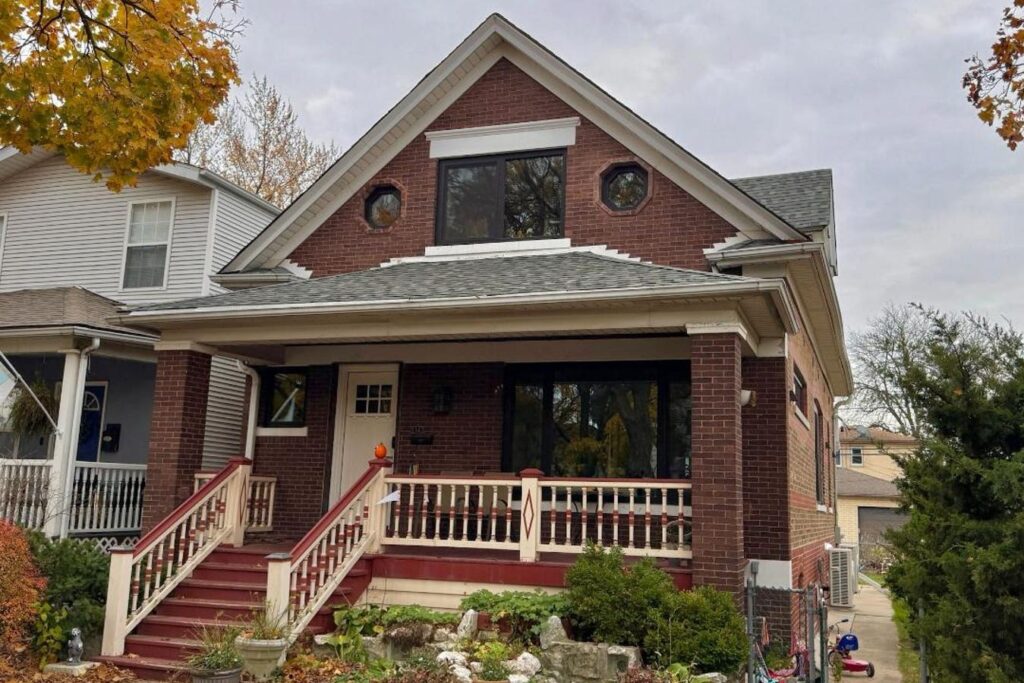Anyone living for any length of time in Chicago is familiar with the term “bungalow belt.” The moniker refers to outer-ring neighborhoods where block upon block of bungalows were built in the second and third decades of the 20th Century.
Because the bungalows were constructed on the fringes of the city where land was then cheap, and featured an easily replicated low-slung design, these humble abodes brought homeownership within reach for many families. Today, many bungalows are still comparatively affordable and are increasingly cherished as symbols of the Windy City’s iconic architectural past.
Just what makes the bungalow so beloved? “The Chicago bungalow is the local expression of Arts and Crafts architecture and succeeded at the intention to bring beauty to the common housing stock,” says Tom Bassett-Dilley, founder and CEO of Oak Park, Ill.-based Tom Bassett-Dilley Architecture (TBDA).
The firm has recently transformed a classic bungalow in the city’s Jefferson Park enclave into a sustainable model for modern times in its “Better Bungalow,” which retained the original exterior aesthetics, while rectifying such older-home problems as high fossil fuel consumption, poor air quality and dampness.
In Chicago’s bungalow stock, expressive facades with masonry details, wooden floors, stained glass and interior built-ins all added enduring charm, Bassett-Dilley says. “They also provided a kind of palette for expansion. Attics and basements could be finished as time went on, so many were able to personalize their homes.”
“Bungalows have the character and charm of the Craftsman-style era when they were built, but are extremely adaptable to our modern lifestyle,” adds Kim Nigro, formerly of Studio Nigro Architecture + Design, who served as a collaborator and colleague on the Better Bungalow project.
She noted the layouts of bungalows are flexible, helping them accommodate all types of family sizes and needs. “In many Chicago neighborhoods, families live in their bungalows for several generations, handing down the homes and continuing to imbue them with memories as the family grows and changes.”
Relevant, attractive
While Chicago bungalows exude character, they aren’t paragons of sustainability or efficient traffic flow. Nonetheless, these symbols of early 20th Century Chicago continue to have an important place in the 21st Century city.
One reason is they’re highly durable, says building consultant and inspector Joe Konopacki, president and CEO of Insight Property Services in Naperville, Ill. “Considering the material and energy that went into the construction of these durable brick structures, it only makes sense to improve their comfort and efficiency to make them relevant for the next 100 years,” he says.
Matthew Nickels, vice president of Oak Park-based energy efficiency and HVAC firm Energy Matters, agrees that while many bungalows are now centenarians, it doesn’t mean they cannot be beautifully retrofitted for this and possibly another century. “Bungalows can be highly repairable [and] upgradeable, giving them many good years ahead of them,” he says. “The compact size reduces capital costs for purchase and repairs. It takes the phrase ‘the home has good bones’ to a whole new level.”
Sizable portion
According to Nigro, bungalows and similar single-family masonry homes constructed prior to 1942 comprise approximately 14% of Chicago’s entire housing stock. They might have reached an even higher percentage had the Great Depression not delivered a halt to wholesale residential home construction across the city, allowing time for other styles like Georgians and ranches to take hold post war.
Their sheer abundance makes them excellent candidates for deep-energy retrofits that can be repeated across the Bungalow Belt, helping Chicago move more quickly toward its carbon-neutral goals, she adds.
The second in this two-part series will begin by examining the challenges of making this 1920s-era home style work for the 2020s’ Chicago families. The article will then shift to some of the innovative solutions the team behind Better Bungalow came up with in fashioning a house with the charming looks of the early 20th Century along with the sustainability and performance sought by today’s growing families.
Read the full article here

